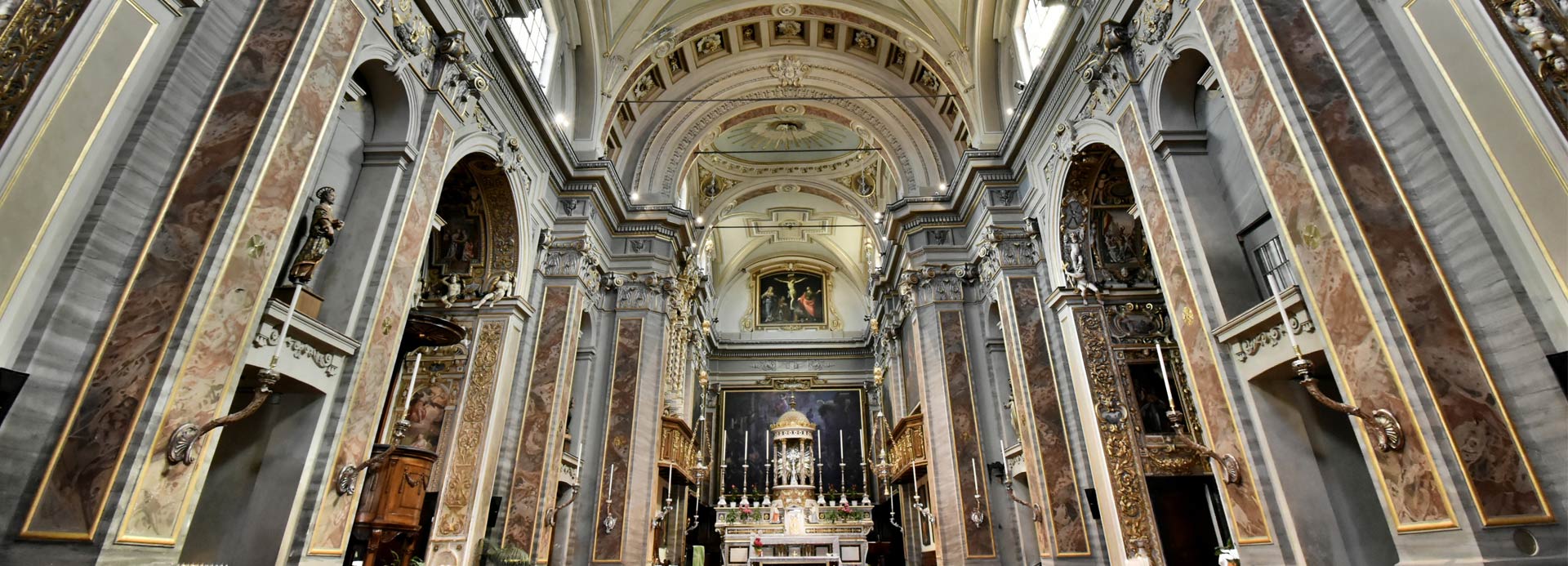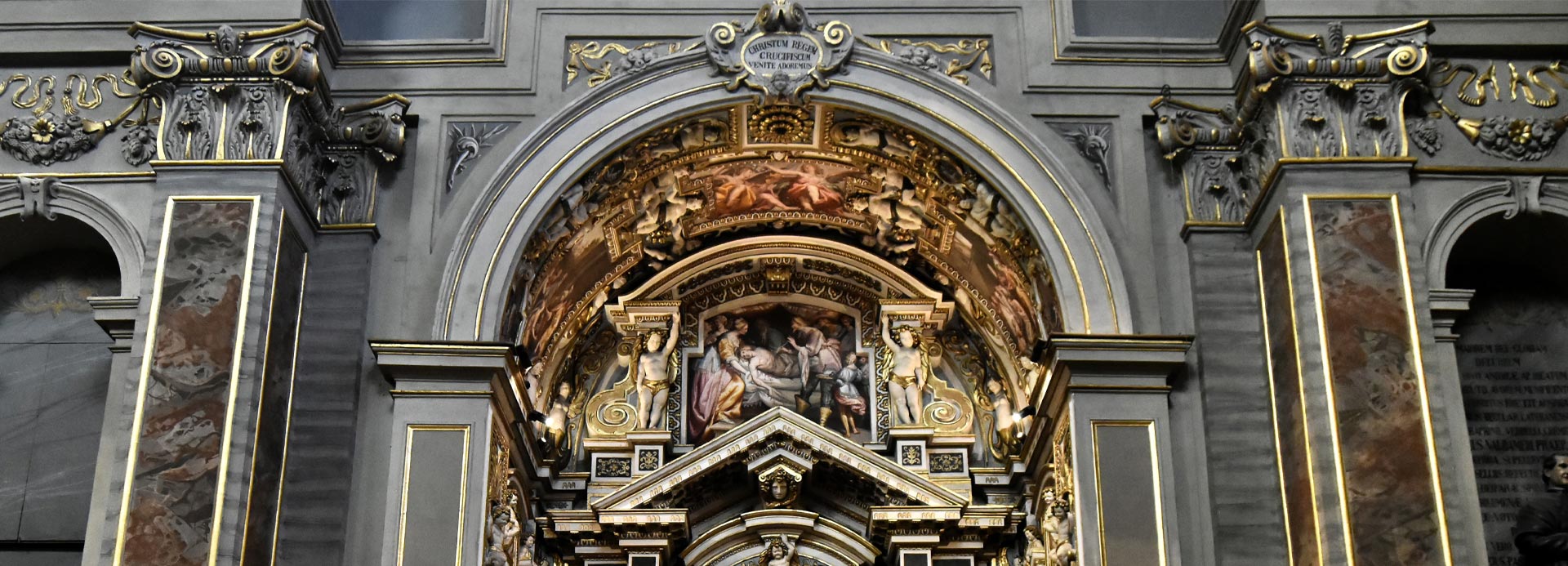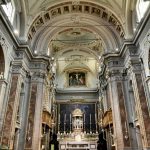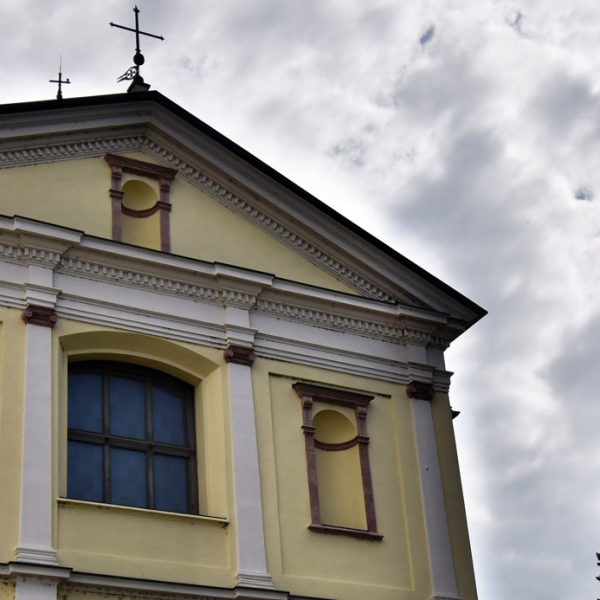 Tutti i luoghi
Tutti i luoghi
Originally dedicated to Saint Andrew
The Church of San Benedetto is situated in the western area of the town which was originally one of the three hamlets located outside the town and which were subsequently incorporated into Crema by the new city walls erected during the Venetian domination. The church was originally dedicated to Saint Andrew the Apostle in accordance with the custom of the time in dedicating churches in the suburbs of the town to the apostles. In 1097 the church was donated to the abbey of Montecassino by Enrico II, Count Giselbertini of Bergamo and his wife Belisia. The following decades saw progressive expansion of the monastery which remained under Benedictine jurisdiction until 1464.
In correspondence with the beginning of Venetian domination in the town, the situation of the monastery began a period of slow decline characterised by financial problems and neglect, due in great part to the system of ‘commendam’ through which the abbey of Montecassino was paid conspicuous amounts. After a papal bull in 1519 the church was handed over to the congregation of Regular Canonical Laterans, under whose care it remained until 1771.

They were great promoters of the renovation of the church, which was carried out between 1622 and 1625 by Francesco Maria Richino, thanks to Prior Serafino Verdelli. The celebrated architect from Milan rethought the entire edifice in Baroque style, while respecting the wishes of Federico Borromeo, he kept part of the mediaeval walls as a sign of continuity, as can be seen in the winter chapel. The church was enlarged and a new monumental facade was added on two levels. In addition, in the following years the Laterans commissioned the decoration of the interior by the best artists in Crema, who contributed to enriching the beauty of the building with stuccos, frescoes and paintings.
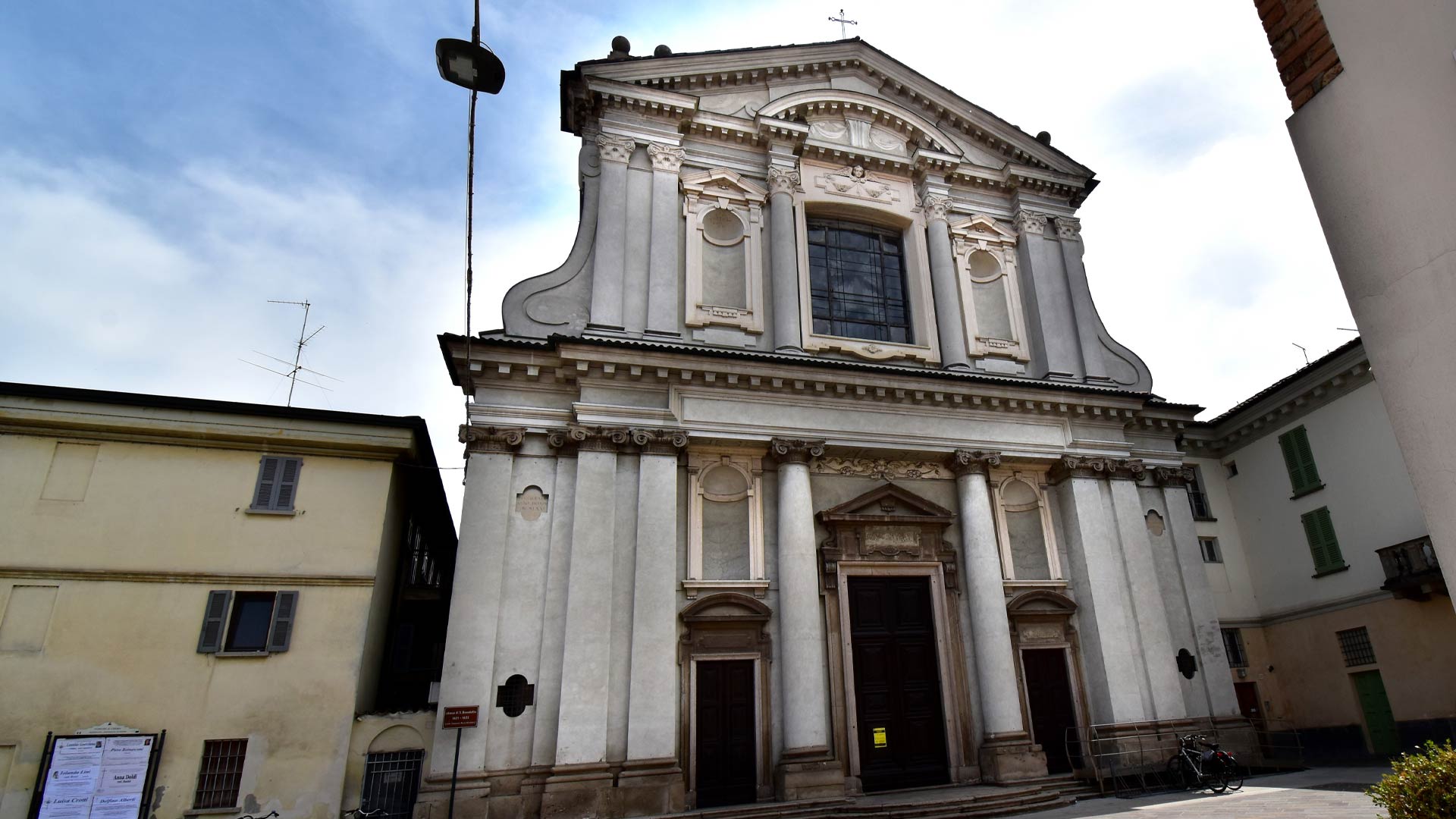
The exterior of the church is dominated by an imposing facade elegantly divided into two levels which finish with an upper tympanum. The lower level has pillars at regular intervals and two columns of the ionic order which frame the central doorway. Above the two side doors there are two empty niches. The second level is framed at the sides by two scrolls from which two pillars arise, a niche and a half-column, which are repeated symmetrically on each side of the central window. The facade as a whole is completed with decorative elements of cornices, leaves and festoons in the typical neoclassical style which was almost the architect’s signature.
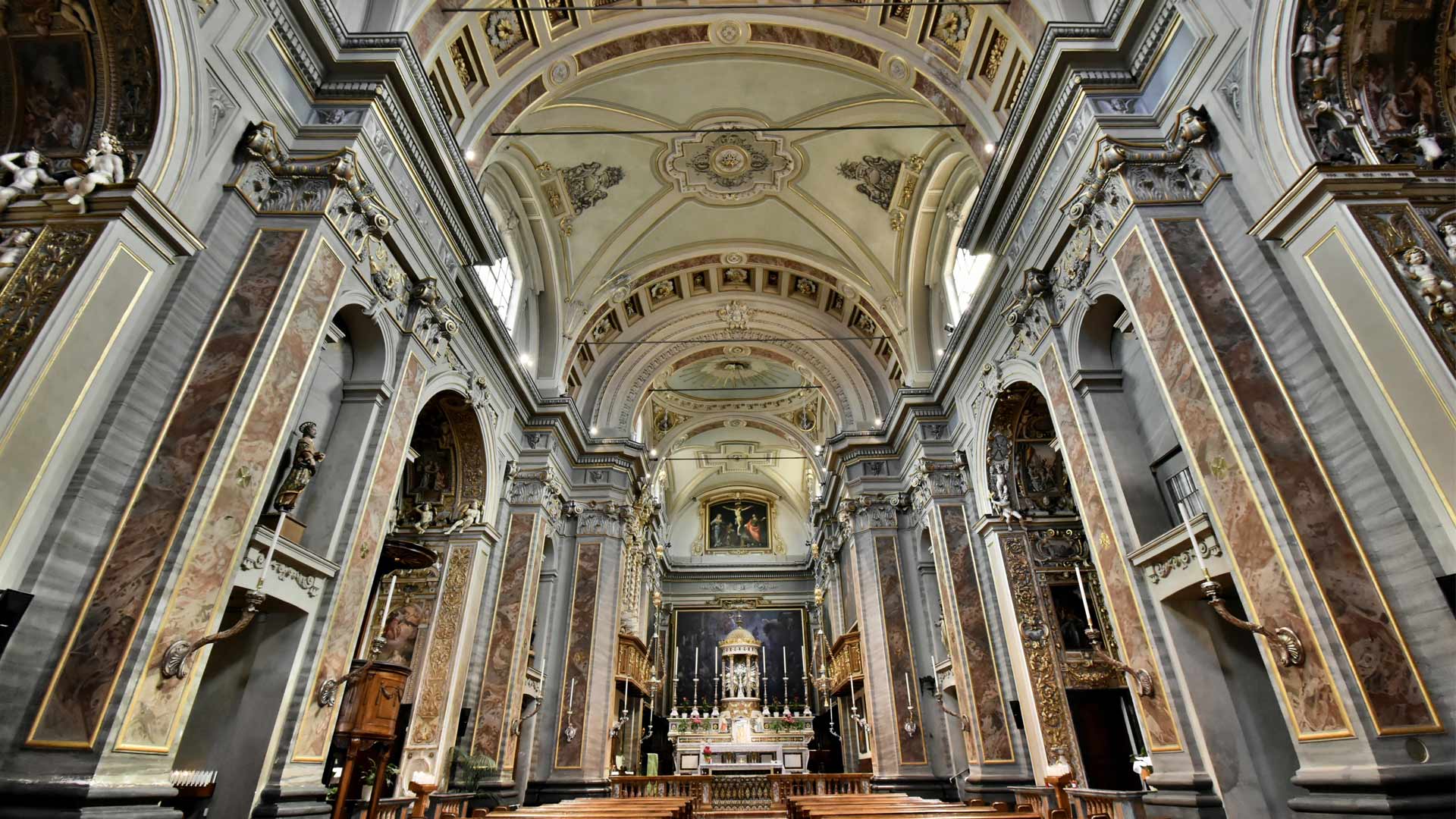
On entering the church one can’t help but be surprised by the size and richness of the stucco work. The interior is a single nave with a vaulted ceiling and is decorated with stuccoes, gilding and faux marbles. There are four symmetrically placed side chapels. On the left we have the chapels of the Santissimo Sacramento and of the Madonna, while on the right the chapels are dedicated to Saint Sebastian and Saint Joseph. These side chapels boast a Baroque decoration of rare elegance and were completed over a number of years by the best 17th century artists in Crema.

In the first chapel on the left, that of the Santissimo Sacramento, visitors can admire the painting of the ‘Trono di Grazia’, which represents the eternal Father holding up his own Son to the faithful and the divine hosts. The altarpiece was originally found in this chapel and kept its place after work on the new church. Gian Giacomo Barbelli was called upon to complete the decoration of the chapel with an iconographical programme linked to the theme of the Eucharist. On the left wall there is a painting of ‘Elijah and the Angel’, and on the right a ‘Last Supper’. In the ceiling vaults we can see ‘Two Angels with Ostensory’, the ‘Easter Banquet of the Jews’, and the ‘Harvesting of Manna’. Following on, we come to the chapel of the Blessèd Virgin with a statue of the Madonna and Child on the altar. All the frescoes with ‘Stories of the Virgin’ and the stuccos were produced by Barbelli in 1636, as can be seen from the date scratched on a pillar.

The chapel of Saint Sebastian is situated on the right side of the church. The altarpiece representing the ‘Martyrdom of Saint Sebastian’, dates back to the previous church and was the
work of the artist Uriele Gatti in c.1585. Other works by Gatti can be found in the church; in particular two paintings which are today positioned above the side doors of the church, one representing Saint Laurence and the other the ‘Liberation of Saint Lucy’. The decoration of this chapel was also produced by Barbelli. The artist depicted scenes from the life of the martyred saint, to whom the chapel is dedicated, through a complex programme of frescoes, paintings and stuccos. The last chapel is dedicated to Saint Augustine and Saint Andrew.
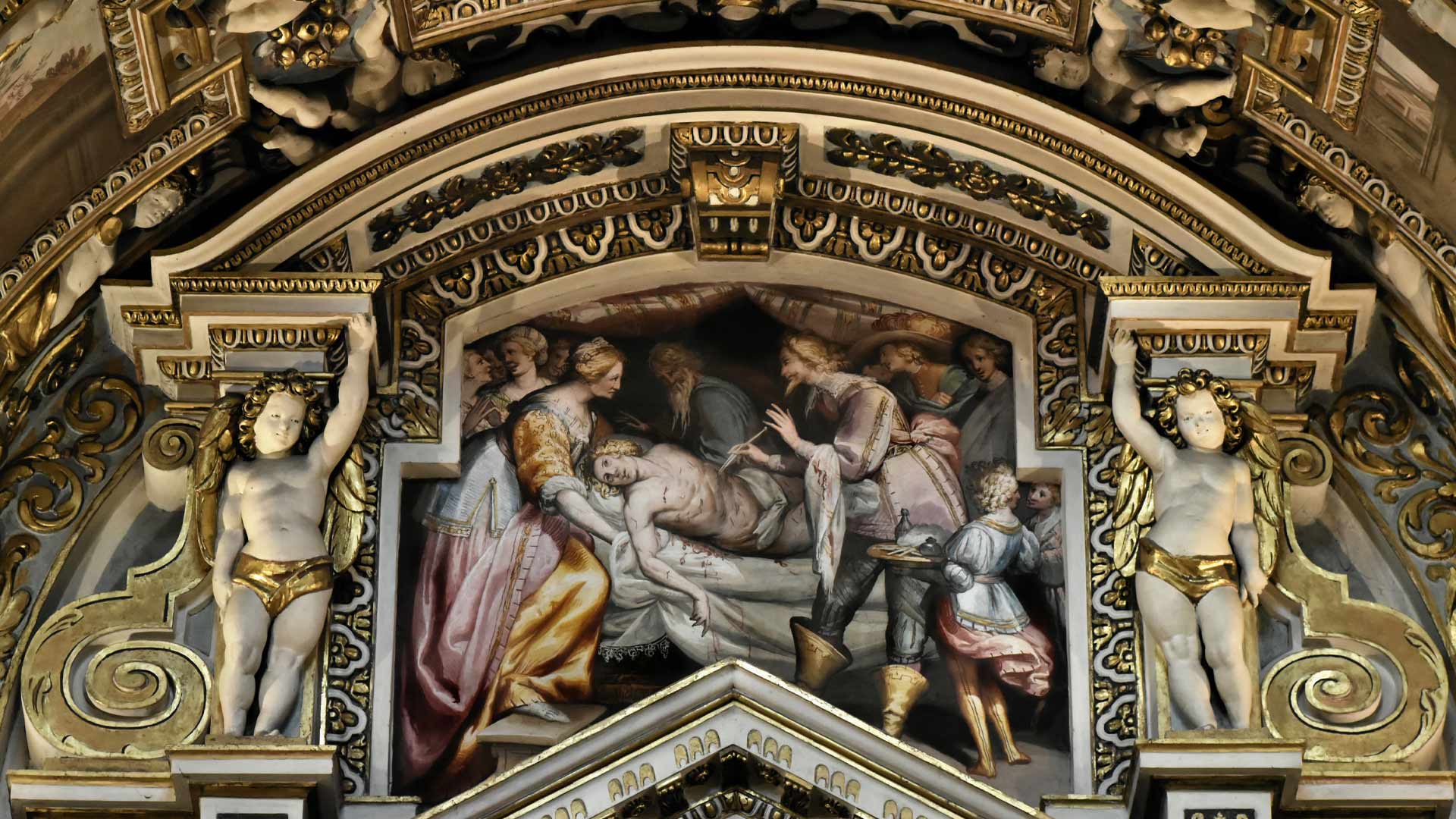
The original altarpiece has been lost and today a statue of Saint Joseph stands in its place. This chapel was decorated by another painter from Crema, Tommaso Pombioli, who is known to have worked in the chapel in 1634, producing the side paintings representing the ‘Miracle of Saint Biagio’, and ‘Saint Ubaldo Drives Away the Demons’. Instead the frescoes were created by Giovan Battista Botticchio in 1648 and are dedicated to the two saints. He also painted the ‘Crucifixion of Saint Benedict’, which hangs behind the choir stalls.

Both the Presbytery and the choir stalls are rich in decoration with notable works of art. Three large paintings, the work of Martino Cignaroli of Verona, are particularly noteworthy and celebrate the work of the Regular Canonical Laterans: ‘Saint Patrick Spreads the Faith’, the ‘Martyrdom of Saint Andrew’, and ‘Saint Ubaldo Heals the Obsessed’ and two other smaller paintings, ‘Saint Augustine’ and ‘A Miraculous Event’. Above the Serassi organ, there is a large painting by Francesco Pozzo, ‘Saint Guarino Gives Alms’, which completes the decoration of the choir.

Info
Piazza Garibaldi, 57
Hours subject to restrictions
Visits prohibited during religious celebretions




